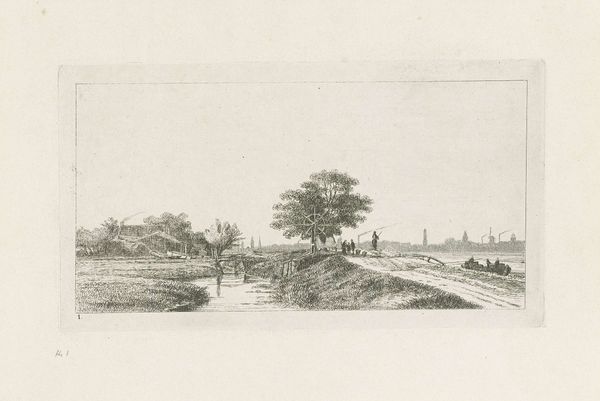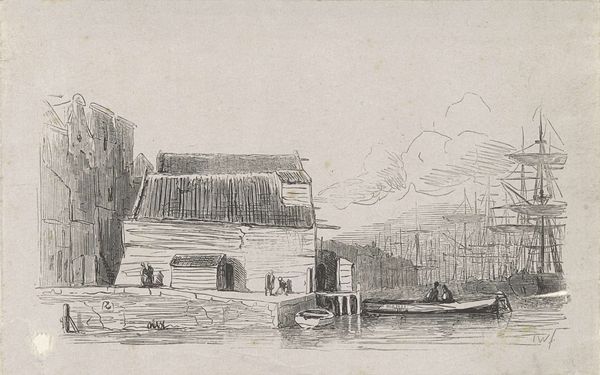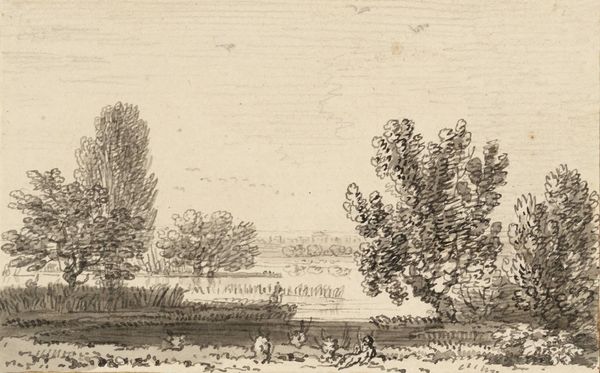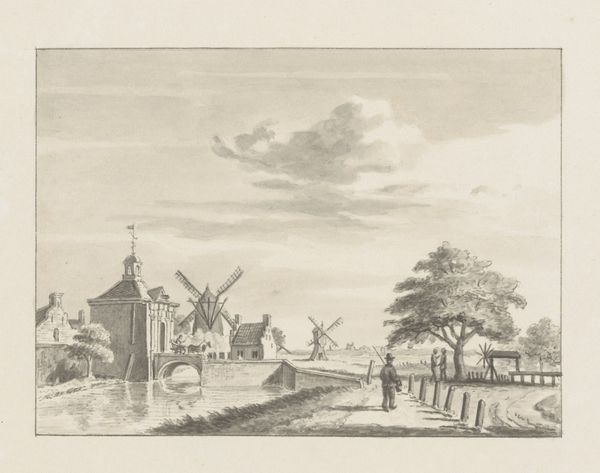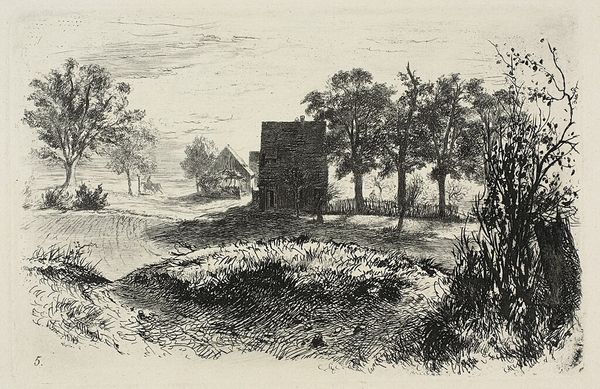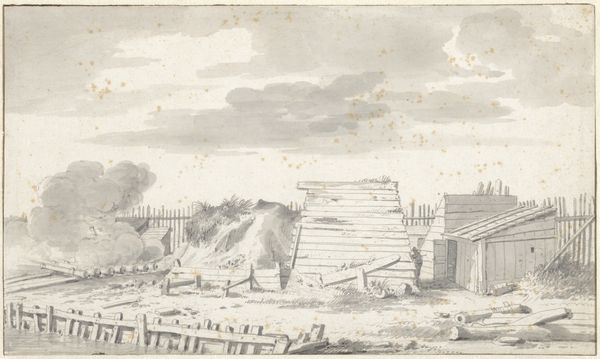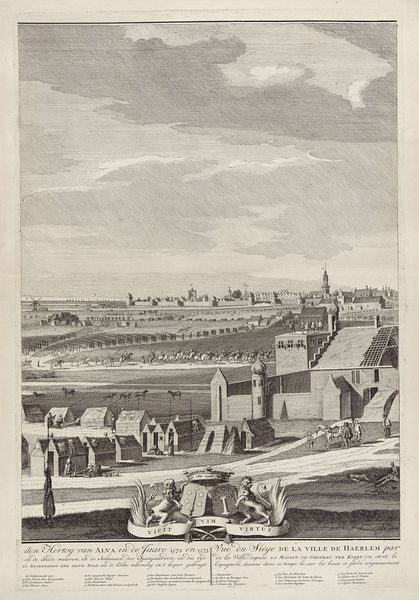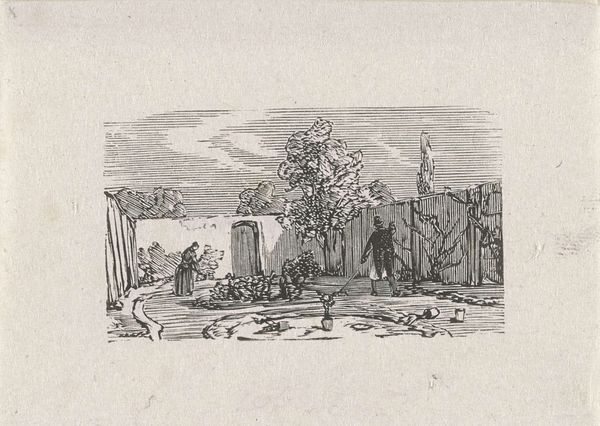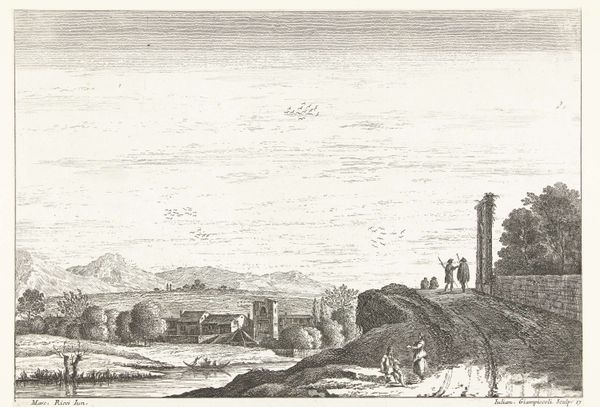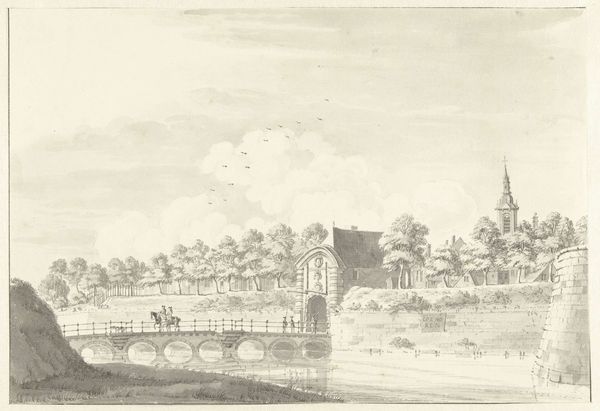
print, engraving
# print
#
pencil sketch
#
dog
#
old engraving style
#
landscape
#
genre-painting
#
engraving
#
realism
Dimensions: height 65 mm, width 117 mm
Copyright: Rijks Museum: Open Domain
Curator: The Rijksmuseum holds this intriguing engraving, “Binnenplein met een hond om een paal heen rennend,” attributed to Isaac Weissenbruch, though its exact date of creation is a little unclear, circa 1836-1912. It’s quite the slice of life, isn't it? Editor: It strikes me immediately as oddly charming, like a glimpse into a miniature, self-contained world. The textures achieved through the engraving technique really bring the scene to life, especially in the dog’s frenetic movement and the roughness of the surrounding wall. Curator: Yes, that contrast is critical! It’s fascinating how Weissenbruch uses a relatively simple composition to evoke such a specific social milieu. Note how the central pole creates a focal point around which daily life orbits—a symbol, perhaps, of community. Consider the rise of genre painting. These glimpses into Dutch life became a means of cultural definition. Editor: Precisely, but what intrigues me more is the visual rhythm. The circular wall pulls your eye around the composition, leading you to the chasing dog and ultimately grounding you back at the central pillar. I’d argue that the repetition of forms is fundamental to its success as a unified picture plane. Curator: Certainly, but remember the political and cultural power embedded within such seemingly innocuous scenes! Genre painting offered patrons a vision of stability, domesticity, and even moral instruction. Weissenbruch, by placing this domestic scene within the controlled bounds of the engraving medium, participates in and perhaps critiques this broader project. The print, designed for consumption and circulation, had political implications. Editor: Interesting perspective! But back to the visual dynamics; the use of light and shadow, limited as it is within the engraving medium, gives an unexpected depth. That long shadow cast by the central pole actually structures the pictorial space by bisecting it horizontally and drawing the eye further into the courtyard's dimensions. Curator: Ultimately, what we see here is an artwork reflecting and shaping societal norms. From its probable place in a bourgeois home to its presence now in the halls of the Rijksmuseum, this print is testament to art’s ability to shape our understanding of the everyday. Editor: Absolutely. And while it's been illuminating to consider its societal echoes, the subtle ways its structure dictates meaning offers enduring satisfaction. A reminder, perhaps, of how both the social world and artistic mastery are woven from shared visions.
Comments
No comments
Be the first to comment and join the conversation on the ultimate creative platform.


